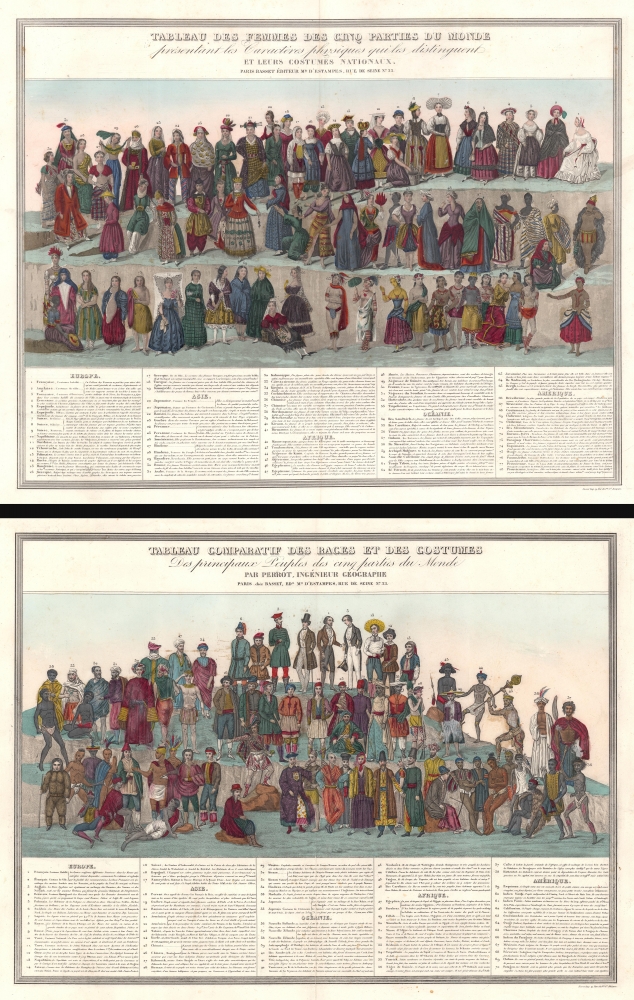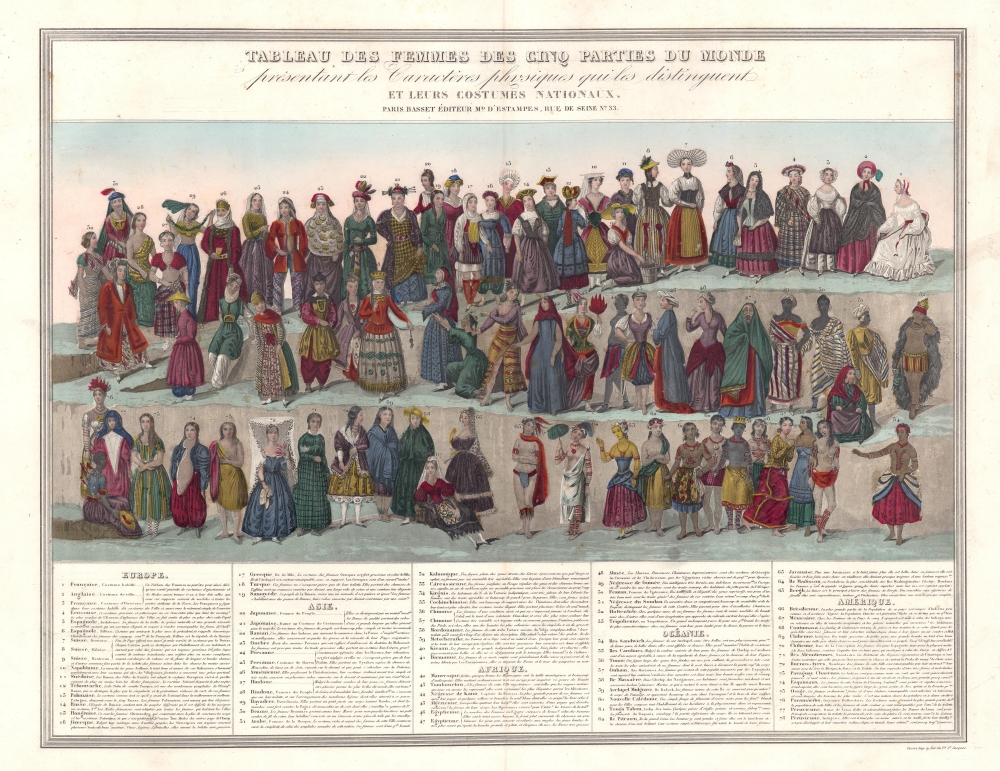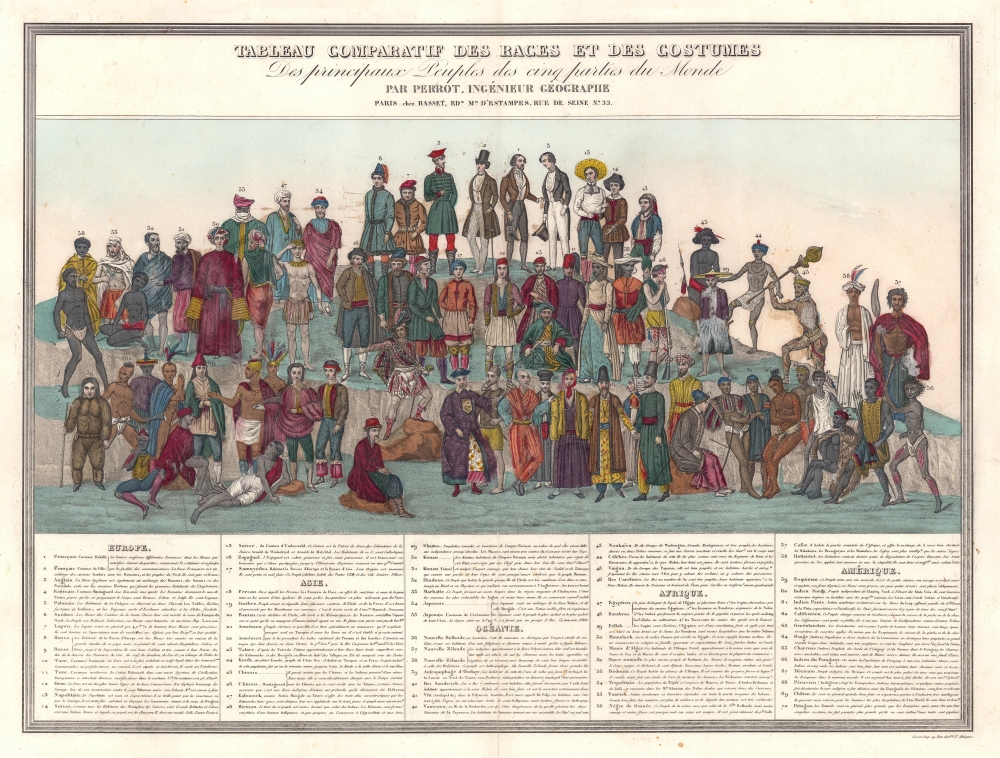1830 Perrot Comparative Charts of the World's Men and Women
MenWomen-perrot-1830
Title
1830 (undated) 19 x 24 in (48.26 x 60.96 cm)
Description
A Closer Look
Seventy-eight women and 70 men from Europe, Asia, Oceania, Africa, and America are depicted in traditional dress. Each likeness is numerically keyed to a label (nationality, race, location) and a short description. Intriguingly, the word 'race' is used only in the title of the comparative chart of men, not the comparative chart of women. National costumes illustrate French, English, Scottish, Persian, Chinese, Japanese, Hawaiian (Iles Sandwich), Berber, Egyptian, Bedouin, Sioux, Eskimo, Peruvian, and Mexican, among others.Gum Arabic Gouache
This view features extensive use of gum arabic. Most watercolor paints produced from the mid-19th century onward have a gum arabic component, which acts as a binding agent to hold the pigment in suspension. When mixing their own paints, some watercolorists will add gum arabic to the paint, leading to strikingly vibrant, glossy, and, depending on the mixture, even transparent and opaque colors. This technique is also sometimes referred to as gouache or bodycolor.Publication History and Census
These charts were created by Ferdinand Victor Perrot, printed by the Fosset Imprimerie, and published by Basset c. 1830. Two holdings are cataloged in OCLC, both in the National Library of Australia. Rare on the private market.CartographerS
Ferdinand Victor Perrot (1808 - 1841) was a French painter and lithographer. Recognized for his talent at a young age, Perrot had completed his first commission by the age of 15 for a local church. A move to Paris came soon after, where he studied with renowned maritime painter Jean Antoine Théodore Gudin. He was a regular exhibitor at the Salon from 1831 until 1844, even though that was three years after his death.He is renowned for his paintings of the countryside in Brittany. He received an invitation to come to St. Petersburg from Tsar Nicholas I, where he was treated in the highest esteem. He was made a member of the Academy of Fine Arts of Saint Petersburg on September 29, 1840 and received a commission for a series of topographical views of Russia and the coast of Finland and lithographs of St. Petersburg. Unfortunately, he died suddenly in Saint Petersburg in 1841 at the age of 33, having only completed two of the commissions. More by this mapmaker...
André Basset (Bassett; fl. 1768 - 1784) was a well-known French publisher and engraver active on the Rue St. Jacques, Paris, during the 18th and 19th centuries. His office was located at the corner of Rue Saint Jacques and of Mathurins, à l'enseigne de Sainte Geneviève. The firm is closely aligned with the Chéreau family of printers and engravers, with whom they were connected with multiple, often incestuous, marriages and remarriages. Basset was best known for the production of low-cost optical views of European cities and events. However, the firm also produced games, maps, and other prints. The firm was taken over by Paul-André Bassett (1759 - 1829) in 1784. Paul-André Bassett himself retired in 1819, but the business continued under various family members until 1865. Learn More...






